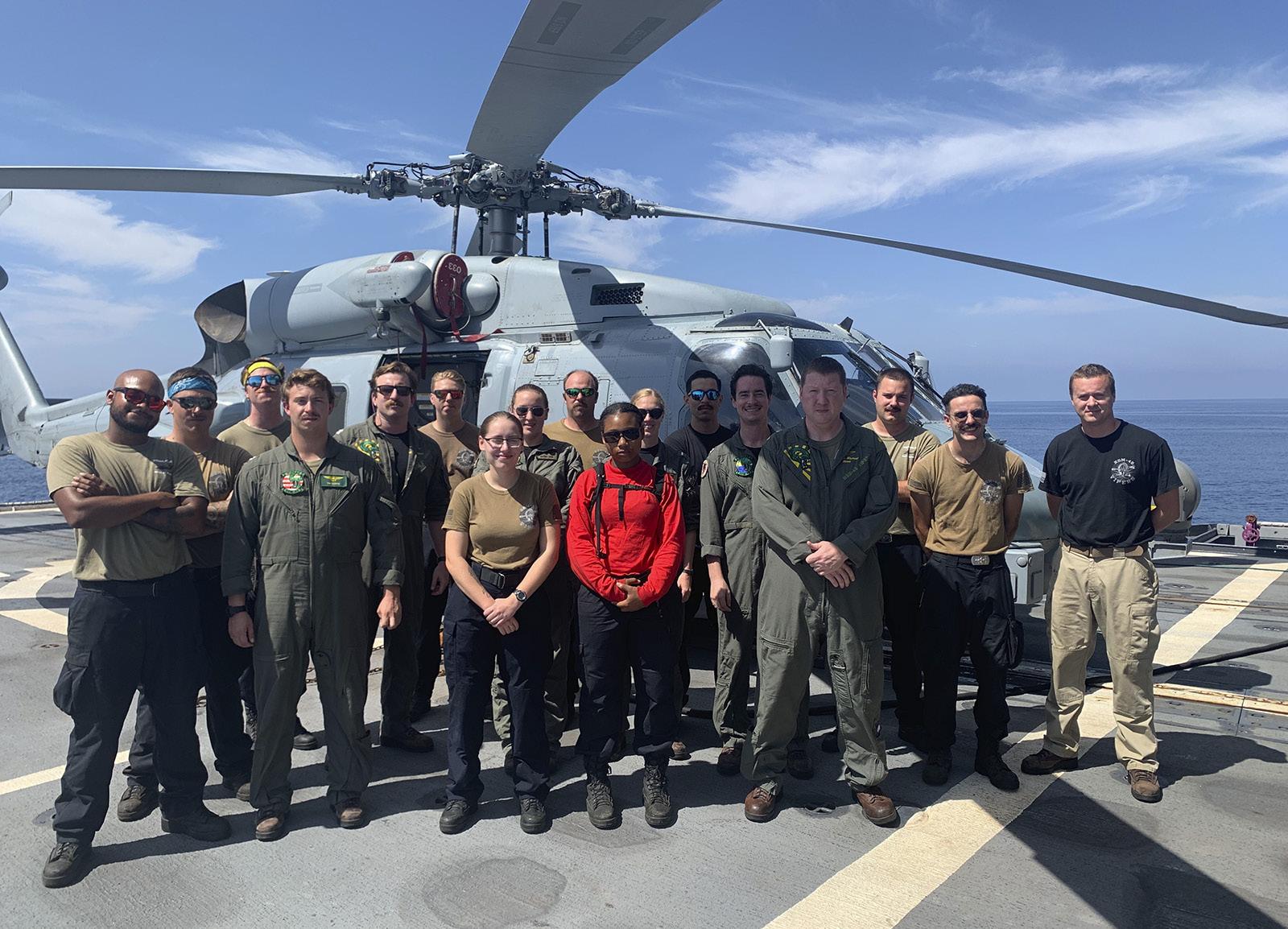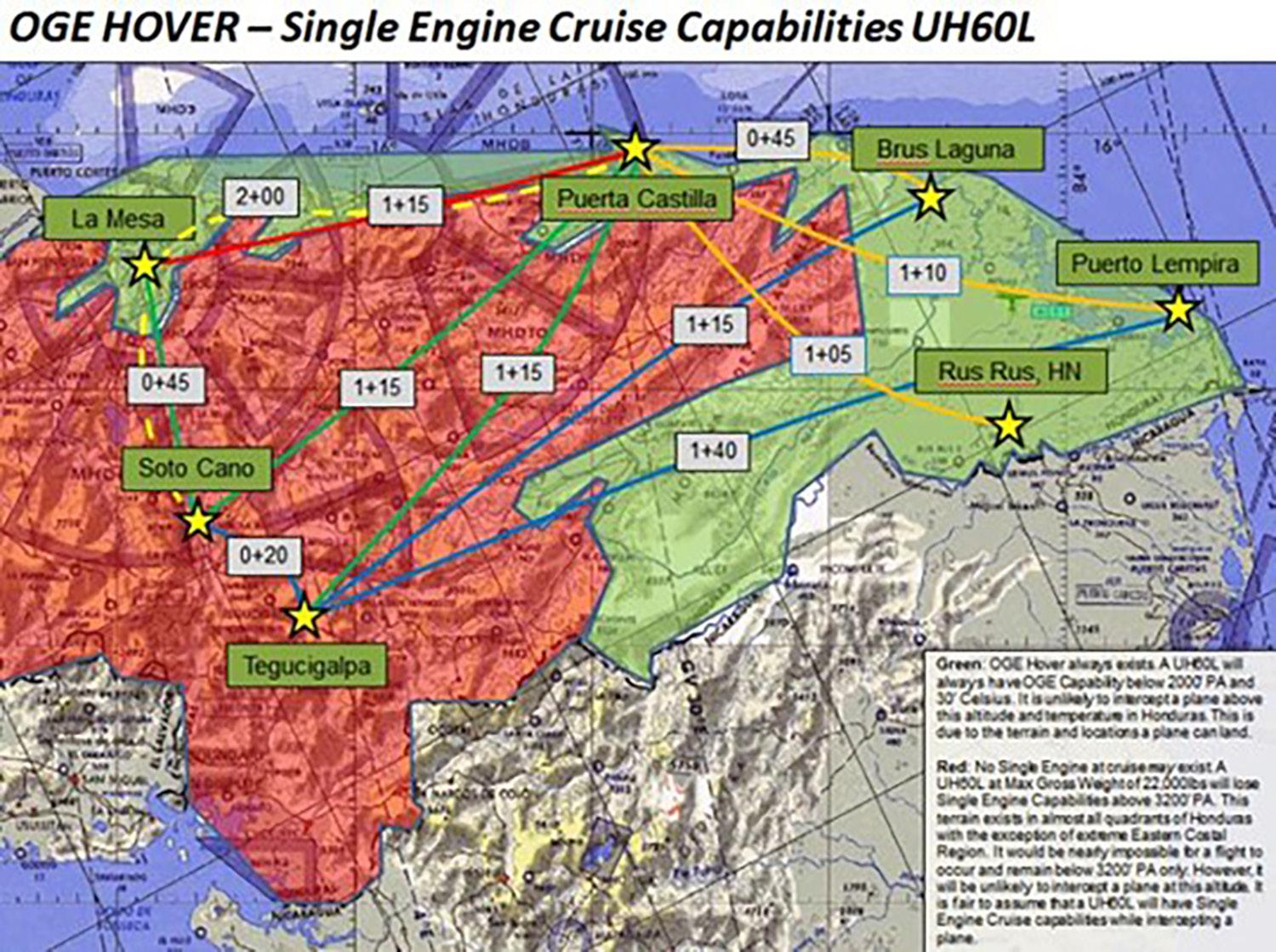
3 minute read
DOGBOX Established: HSM-48 Detachment Four “Man O’ Wars” Conducts Record REXTORP Training Exercise at Sea
By LT Marina Leynse, USN
On 11 July 2020, HSM-48 Detachment Four (48.4) and USS Philippine Sea (CG-58) successfully conducted a Torpedo Exercise (TORPEX) during Philippine Sea’s (PSE) Surface Warfare Advanced Tactical Training (SWATT) Exercise. Together, they successfully fired and recovered 4 x MK-54 REXTORPs in rapid succession. HSM48.4’s three torpedo employments completed their AntiSubmarine Warfare (ASW) pre-deployment readiness requirements during a highly dynamic COVID-19 deployment schedule. This event marks the first time an HSM Squadron has deployed and recovered multiple REXTORPS during an at-sea work up period.
Executing a dynamic and multifaceted evolution in the maritime environment required extensive planning and coordination from both air and ship teams. In total, this exercise took over three months to coordinate and approximately 8 hours to execute. In order to complete the event, a total of four MK-54 REXTORPs had to be employed – three air-launched and one launched from PSE’s Surface Vessel Torpedo Tube (SVTT). For this exercise, Target Support Vessels (TSV) were unavailable – TSVs or recovery helicopters are always scheduled to recover expended REXTORPs during Torpedo Exercises involving the MH-60R. Lacking external recovery options, PSE and HSM-48.4 had to develop a complex plan that minimized the risks to untrained personnel and loss of a REXTORP, while maximizing training and mission accomplishment.
We faced many planning challenges in this exercise: weather diverts, personnel limitations, absence of backup days, and a lack of lessons to use from other exercises. PSE only had one Sailor on board that had ever recovered a REXTORP, and the ship was limited to single Rigid-Hull Inflatable Boat (RHIB) operations at the time. I believe that the preparation we put in place prior to the event was what made this unprecedented operation successful - multiple planning sessions, training exercises, and dry-runs helped ensure that we were ready to deploy and recover the REXTORPs. The ship/air team imposed a strict schedule: all REXTORPS would be banded and staged the night prior in order to shorten load times. The hard deadline for the final shot had to be 1800L in order to ensure sufficient daylight to recover the remaining torpedo. Each recovery required at least 2 hours to complete, and the next weapon couldn’t be launched until the last was recovered. Consequently, continuous RHIB operations had to be HSM-48 Detachment 4 “Man O’ War" aboard USS Philippine Sea (CG 58)

HSM-48 Detachment 4 “Man O’ War" aboard USS Philippine Sea (CG 58)
The Man O’ War’s maintenance and ordnance team, along with PSE’s crew, flawlessly executed the banding, staging, and upload of the MK-54 REXTORPs. Venom 507 was initially loaded with two torpedoes to minimize loading times and delays on deck. After the first scheduled Flight Quarters and the launch of VENOM 507, the RHIB Team deployed and positioned themselves at a safe distance from the drop area. The first weapons release was a success. Venom 507 circled back and marked-on-top of the expended REXTORP, deployed a MK-58 Smoke to assist the RIB Crew with visually acquiring, and conned the RIB Crew in via the radio on a maritime frequency. While the REXTORP was being recovered, Venom 507 landed, crew swapped, and re-launched.
With the limitation of one torpedo in the water per recovery, Venom 507 orbited and waited for the RIB Team to complete the recovery alongside PSE. The aircrew then fired the second REXTORP. This flow of events allowed for maximum efficiency between torpedo drop and recovery times. Due to a last minute change in the ship’s schedule, PSE shot their torpedo third, while Venom 507 was shut down on deck (uploading the final torpedo). After the recovery of PSE’s REXTORP, Venom 507 launched and fired the last weapon without incident. All REXTORPs were successfully deployed and recovered during the eight hour operation.
Meticulous planning and careful execution allowed for all members of the Air Detachment and the Crew of the USS Philippine Sea to safely and efficiently meet their predeployment requirements. Although this type of exercise is atypical, I feel that it should become more common. Ships and embarked Air Detachments will not only gain experience, but also employ torpedoes in a manner that is tactically relevant. We should train like we fight!










